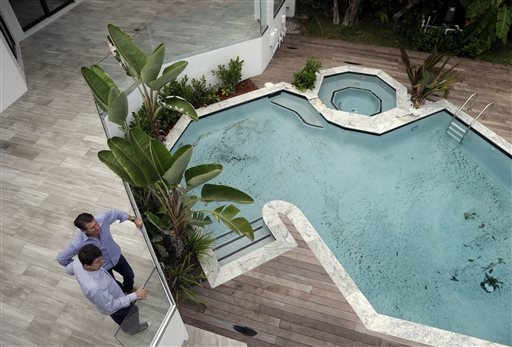Home-price rise cools, but Las Vegas shows 12.8 percent gain
WASHINGTON — U.S. home prices in July increased at the slowest pace in 20 months, reflecting sluggish sales and a greater supply of houses for sale.
But Las Vegas showed an annual gain of 12.8 percent, best in the nation.
The Standard & Poor’s/Case-Shiller 20-city home price index rose 6.7 percent in July from 12 months earlier. That’s down from an 8.1 percent gain in June and the smallest increase since November 2012.
Sales of existing homes have been weak for most of this year. They picked up over the summer but then fell in August and are 5.3 percent lower than a year ago.
The slowdown has occurred partly because investors are pulling back from the housing market. Meanwhile, many would-be buyers are unable to obtain a mortgage, particularly first-time buyers. Nineteen of the 20 cities in the index reported lower annual gains than in June. And a new broader index of nationwide home prices compiled by S&P rose just 5.6 percent.
The Case-Shiller 20-city index covers roughly half of U.S. homes. The index measures prices compared with those in January 2000 and creates a three-month moving average. The July figures are the latest available.
Even cities that have seen the biggest price gains are cooling off. Las Vegas’ 12.8 percent price increase from a year ago was the highest of the 20 cities tracked by Case-Shiller. But that’s down from a nearly 30 percent jump last year.
The second-largest increase was in Miami, where home prices rose 11 percent from a year earlier, and the third-largest was in San Francisco, with a 10.3 percent climb.
Nineteen of the 20 cities reported higher prices in July from June. Costs fell 0.4 percent in San Francisco that month.
A larger number of homes for sale is helping slow price gains. Last fall, bidding wars emerged in many cities as buyers chased after an unusually low housing inventory.
There are 2.3 million homes on the market nationwide, according to the National Association of Realtors. That’s about 4.5 percent higher than a year ago.
In many states, the supply growth has been bigger. And unlike earlier in the recovery, they aren’t dependent on foreclosures. More homes are being listed for sale by regular homeowners, many of whom were likely drawn into the market by last year’s big price increases.
The number of homes for sale has jumped 46 percent in Nevada, according to Michelle Meyer, an economist at Bank of America Merrill Lynch. It has risen 38 percent in California and 33 percent in Arizona. That has helped slow price gains in those markets. Meyer forecasts annual price increases will decelerate to 3.9 percent by the end of the year.






















